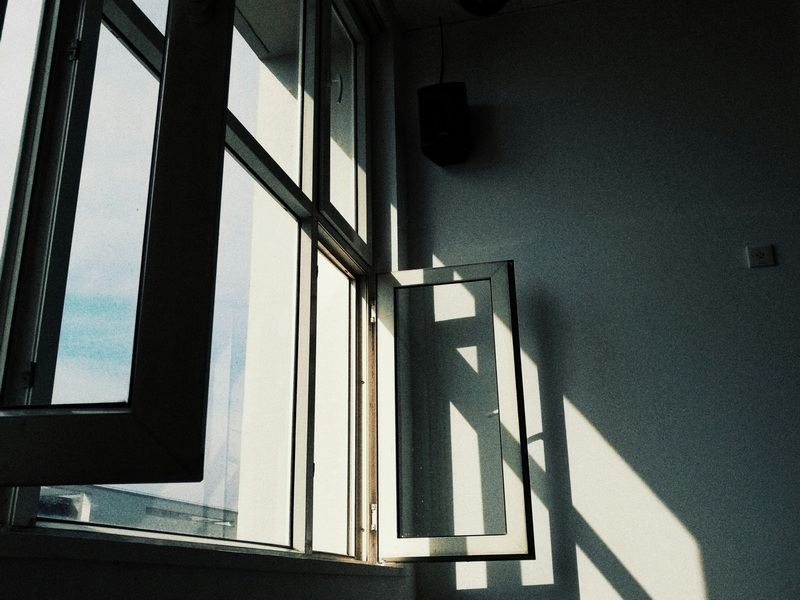English 




Views: 222 Author: Astin Publish Time: 2025-02-18 Origin: Site



Content Menu
● The Basics of Aluminum Window Frames
● Types of Aluminum Window Frames
● Benefits of Using Aluminum for Window Frames
● Common Terminology Related to Aluminum Window Frames
● The Manufacturing Process of Aluminum Window Frames
● Energy Efficiency Considerations
● Aesthetic Appeal of Aluminum Windows
● Common Misconceptions About Aluminum Windows
● Maintenance Considerations for Aluminum Windows
● FAQ
>> 1. What are aluminum profiles?
>> 2. How do thermally broken aluminum frames work?
>> 3. What is anodizing in relation to aluminum?
>> 4. Are aluminum window frames recyclable?
>> 5. What maintenance do aluminum windows require?
Aluminum window frames are often referred to as aluminum profiles, aluminum sections, or aluminum extrusions. These frames are favored for their strength, durability, and lightweight properties. They are commonly used in both residential and commercial buildings due to their aesthetic appeal and functional benefits.
Aluminum frames can be designed in various styles, including single-hung, double-hung, casement, and sliding windows. Each style offers unique advantages in terms of functionality and design compatibility with different architectural styles.

There are several types of aluminum window frames available on the market:
1. Standard Aluminum Frames: These are the most common types used in residential and commercial buildings. They provide a balance between durability and cost-effectiveness.
2. Thermally Broken Aluminum Frames: These frames have a thermal break that reduces heat transfer between the interior and exterior of the building. This feature enhances energy efficiency by minimizing heat loss or gain.
3. Anodized Aluminum Frames: Anodizing is an electrochemical process that increases the thickness of the oxide layer on aluminum surfaces. This treatment enhances corrosion resistance and durability, making anodized frames ideal for harsh weather conditions.
4. Powder-Coated Aluminum Frames: Powder coating provides a protective finish that is available in various colors. This option not only enhances aesthetics but also adds an extra layer of protection against scratches and fading.
5. Composite Aluminum Frames: These frames combine aluminum with other materials to improve thermal performance while maintaining the strength of aluminum.
Aluminum window frames offer numerous advantages:
- Durability: Aluminum is resistant to warping, cracking, and splitting, making it an excellent choice for long-lasting window frames.
- Low Maintenance: Unlike wood frames that require regular painting or staining, aluminum frames need minimal upkeep. A simple wash with soap and water is usually sufficient to keep them looking new.
- Energy Efficiency: While traditional aluminum frames conduct heat, thermally broken options significantly improve energy efficiency by reducing heat transfer.
- Design Versatility: Aluminum can be easily molded into various shapes and sizes, allowing for custom designs that can fit any architectural style.
- Sustainability: Aluminum is recyclable, making it an environmentally friendly choice when considering materials for construction.
Understanding the terminology associated with aluminum window framing is essential for effective communication among builders, architects, and homeowners:
- Cladding: This refers to the exterior layer of material applied over the frame to enhance aesthetics or insulation properties.
- J Channel: A specific type of trim used around windows that helps manage water runoff and provides a clean finish.
- Flashing: A protective barrier installed around windows to prevent water infiltration.
The manufacturing process of aluminum window frames involves several steps that ensure quality and precision:
1. Extrusion: The first step involves extruding aluminum through a die to create specific shapes or profiles. This process allows manufacturers to produce complex designs that meet architectural requirements.
2. Cutting: Once extruded, the aluminum sections are cut to size based on the specifications provided by architects or builders. Precision cutting ensures that each piece fits perfectly during assembly.
3. Finishing: After cutting, the frames undergo finishing processes such as anodizing or powder coating. These treatments enhance corrosion resistance and improve aesthetics by allowing for various color options.
4. Assembly: The finished components are then assembled into complete window units. This step may involve incorporating glass panes, seals, and hardware necessary for operation.
5. Quality Control: Finally, each window unit undergoes rigorous quality control checks to ensure they meet industry standards for performance and durability before being shipped to customers.
In today's environmentally conscious world, energy efficiency has become a significant factor in choosing window materials. Aluminum windows can be designed with features that enhance their energy performance:
1. Low-E Glass: Incorporating low-emissivity (Low-E) glass can significantly reduce heat transfer through windows while allowing natural light to enter homes. This technology minimizes energy costs associated with heating and cooling.
2. Insulated Frames: Thermally broken aluminum frames provide insulation that reduces energy loss compared to standard aluminum frames. They help maintain comfortable indoor temperatures year-round.
3. Proper Installation: The effectiveness of aluminum windows also depends on proper installation techniques. Ensuring that windows are sealed correctly prevents drafts and moisture infiltration, further enhancing energy efficiency.

Aluminum windows offer a modern aesthetic that complements various architectural styles:
1. Sleek Design: The slim profiles of aluminum frames allow for larger glass areas without compromising structural integrity. This design maximizes natural light while providing unobstructed views.
2. Color Options: With powder coating technology, homeowners can choose from a wide range of colors to match their home's exterior design seamlessly.
3. Customization: Manufacturers can create custom shapes and sizes tailored to specific design needs, ensuring that each window fits perfectly within its designated space.
4. Contemporary Look: The clean lines and minimalist appearance of aluminum windows contribute to a contemporary look that appeals to modern homeowners seeking stylish yet functional solutions.
Despite their popularity, there are several misconceptions about aluminum windows:
1. Poor Insulation: Many people believe that aluminum windows are not energy-efficient due to their conductive nature; however, advancements in thermal break technology have significantly improved their insulation properties.
2. High Maintenance Needs: Some assume that aluminum requires extensive maintenance like wood; however, they are relatively low-maintenance compared to other materials such as wood or vinyl.
3. Limited Lifespan: While some may think aluminum windows corrode quickly, high-quality finishes like anodizing or powder coating protect against corrosion effectively, extending their lifespan significantly.
4. Dull Appearance: There's a belief that aluminum windows lack aesthetic appeal; however, with various finishes available today—ranging from sleek metallics to vibrant colors—these windows can enhance any home's curb appeal.
While aluminum windows are low maintenance compared to other materials like wood, they still require some care to ensure longevity:
1. Regular Cleaning: Clean the frames periodically with mild soap and water to remove dirt and grime. Avoid abrasive cleaners that could scratch the surface.
2. Inspect Seals: Check the seals around the windows regularly for signs of wear or damage. Replacing worn seals can prevent air leaks and improve energy efficiency.
3. Check for Corrosion: In coastal areas where saltwater exposure is common, inspect the frames for signs of corrosion. Anodized finishes can help mitigate this issue but should still be monitored regularly for any signs of wear or damage.
4. Lubricate Moving Parts: For windows with moving components (like casement or sliding windows), lubricate hinges and tracks periodically to ensure smooth operation without resistance or sticking issues over time.
5. Paint Touch-Ups: If you have powder-coated frames that chip or scratch due to weather exposure or physical impact from debris during storms or high winds—consider using touch-up paint designed specifically for aluminum surfaces—to maintain appearance without needing full repainting jobs every few years!
Aluminum window framing is a popular choice due to its durability, low maintenance requirements, aesthetic versatility, energy efficiency potential—and overall value proposition! Understanding key terminology associated with these products—such as profiles/cladding/J channels/flashing—can help homeowners make informed decisions regarding installation/replacement options available today! By considering factors such as energy efficiency needs/maintenance requirements/customization possibilities—individuals can select the best-aluminum-window options suitable for their homes/commercial properties!

Aluminum profiles refer to extruded shapes made from aluminum that are used in constructing window frames, doors, and other architectural elements.
Thermally broken aluminum frames contain a plastic section between the interior and exterior parts of the frame that reduces heat transfer, improving energy efficiency.
Anodizing is an electrochemical process that thickens the oxide layer on aluminum surfaces to enhance corrosion resistance and durability.
Yes, aluminum window frames are highly recyclable, making them an environmentally friendly option in construction.
Aluminum windows require regular cleaning with soap and water; inspection of seals; lubrication of moving parts; checking for corrosion; touch-up painting if necessary—to ensure optimal performance over time!
[1] https://moxisys.com/aluminium-window-material-list/
[2] https://www.wganz.org.nz/guide/choosing-frame-materials/
[3] https://jphe.amegroups.org/article/view/4265/10863
[4] https://betaview.com.au/glossary/
[5] https://detail-library.co.uk/types-of-window-frame-material-and-glazing/
[6] https://gist.github.com/allenfrostline/c6a18277370311e74899424aabb82297
[7] https://www.reddit.com/r/Carpentry/comments/1hmsi9c/what_is_this_aluminum_cladding_around_the_window/
[8] https://www.energy.gov/energysaver/window-types-and-technologies
[9] https://b3logfile.com/pdf/article/1653485885581.pdf
[10] https://www.supplyonlydoors.com/help-and-advice/different-types-of-aluminium-windows/
[11] https://crawfordarchitecture.co.uk/architecture/windows-frames-which-material-is-best/
[12] https://learn.microsoft.com/zh-cn/style-guide/scannable-con
Top Aluminum Furnitures Manufacturers and Suppliers in Czech Republic
Top Aluminum Furnitures Manufacturers and Suppliers in Poland
Top Aluminum Furnitures Manufacturers and Suppliers in Belgium
Top Aluminum Furnitures Manufacturers and Suppliers in Finland
Top Aluminum Furnitures Manufacturers and Suppliers in Denmark
Top Aluminum Furnitures Manufacturers and Suppliers in Greece
Top Aluminum Furnitures Manufacturers and Suppliers in Portugal
Top Aluminum Furnitures Manufacturers and Suppliers in Austria
Top Aluminum Furnitures Manufacturers and Suppliers in Norway
Top Aluminum Furnitures Manufacturers and Suppliers in Sweden
